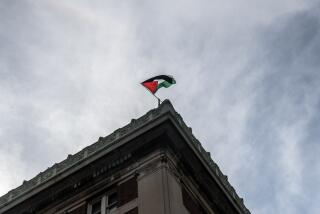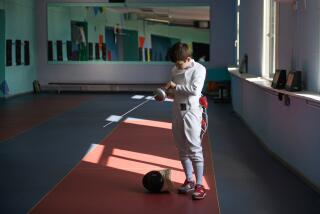Destination: Poland : Poland’s Cinderella City : Krakow, survivor of many storms, has emerged triumphant and beautiful
KRAKOW, Poland — Late-summer storms are always sudden, but on this day, neither my friend Andrzej nor I had noticed the inky clouds rushing in until the first drops fell. Suddenly, everything was in motion; a strong hot wind whipped skirts up and turned umbrellas inside out and thousands of pigeons flapped around in a state of panic. The clouds opened with an angry crack oflightning and a deluge transformed the flagstones of the immense Rynek Glowny (Market Square) into a vast reflecting pool. Then, the storm ended as suddenly as it had begun and rays of sunshine bathed the honey-colored medieval Cloth Hall in such intense light, it dazzled against the backdrop of a leaden sky. It seemed as if the Great Metaphor Maker was saying, “Here it is. This is what Krakow is all about. Beauty triumphant after the storm.”
In its more than thousand-year history, Krakow has seen so many violent storms that the survival of its medieval stones seems nothing short of a miracle. Invading armies have tromped back and forth across the city for centuries and only chance saved it from being blown to smithereens by the Nazis, as Warsaw was. But after each invasion and occupation, Krakow has rebuilt and returned to its role as the most beautiful city in Poland.
Not only Poland. When the United Nations Educational, Scientific and Cultural Organization (UNESCO) compiled its first list of the world’s 12 most important cultural monuments (World Heritage Sites), Krakow was among them.
When I first saw the city in 1963, it was a sad Cinderella kind of place. Its Gothic/medieval/Renaissance loveliness was covered in black grime, and acid rain from the nearby Soviet-built Nowa Huta steelworks had pitted the centuries-old stone. Tragedy hung from its turrets. After 17 years of Soviet domination, Communism seemed permanently entrenched, and dispirited Poles found it hard to sing the words of their national anthem--”Poland still has not perished. . . .” With Solidarity and the revolution of 1989, everything changed.
Over the last three years of annual pilgrimages, I’ve watched the city begin to emerge. On ancient streets such as Kanonicza, old medieval facades surface from beneath modern camouflage. Behind the scaffolding, warm pastels replace the gray grime of the Communist years. People are alive again. They smile. They wear red now because it is a beautiful color.
*
My visits back began with a story, and like all good stories, it was a love story.
It seems that a wealthy ancestor of mine (a few greats back) fell in love with a strikingly beautiful young woman who was neither upper crust nor Gentile. In 19th-Century anti-Semitic Poland, theirs would not exactly have been considered a match made in heaven. Consumed by passion for one another, this young Polish Romeo and his Jewish Juliet married in secret and ran off together, never again to see their families.
That’s about all there was to the story, but over the years, it grew in my mind and became the seed for a novel now building in my computer that sweeps through the dramatic and cataclysmic events of the 19th and 20th centuries, following the two families of the young lovers. It was the need to tell this story that drew me to Poland in the summer of 1990--and again in 1991 and 1992.
This last visit was as a student of Polish language, history and culture at the Jagiellonian University in Krakow, an institution bound more closely to the identity of the city than almost any other university in the world. The Krakowians have always seen themselves as the “thinkers” of Poland, and Krakow has always attracted the nation’s greatest writers, artists and scientists. When Hans Frank, the notorious Nazi commandant, took up residence in Krakow, one of his first acts was to invite the university’s staff to an “academic conference.” The 183 professors that arrived were brutally beaten and then shipped out to concentration camps in Germany. Many of them perished. Although the university was officially closed, clandestine lectures were held in private homes throughout the war. The Soviets who came after them had their own “anti-intelligentsia” measures such as building the suburb of Nowa Huta, with one of Europe’s largest steel mills as its core. The worker was to have taught the intellectual a thing or two.
The Jagiellonian, founded in 1364, is one of the oldest and most respected places of learning in the world. It was here in the early 16th Century that Nicolaus Copernicus “stopped the sun and started the earth moving,” thus creating the basis for modern astronomy. The Jagiellonian was a center of enlightened thinking long before the Age of Enlightenment; a professor named Pawel Wlodkowicz was sent to the Council of Constance in 1414 and amazed rulers throughout Europe by stating that nobody had the right to occupy other countries or to spread religious beliefs by force. The light of tolerance radiating from this place of learning drew repressed intellectuals to Krakow from all parts of the world.
As part of our introduction to the university, my international group of classmates was toured through the Collegium Maius, the oldest building on the campus, dating back to the early 15th Century. Entering the building from a small doorway on ulica Jagiellonska, one comes into a courtyard with a marble fountain surrounded by arcades. A staircase leads up to a small museum on the second floor where you can see everything from the (alleged) skulls and wizardly tools of Dr. Faustus to the strange-looking astronomical instruments used by Copernicus.
*
The Rynek Glowny, a block from the university, is the heart and soul of Krakow, the focal point of everything that happens in the Stare Miasto (Old Town). From the early 13th Century, this is where Krakow merchants came to hawk their wares. They still come to sell flowers or delicious Polish bagels or chess sets, but the plaza is wide open now. In its heyday, each square inch would have been covered with goats, sheep, pigs, vegetables and monks selling indulgences.
It was here, after class on most days, that we would drift to see what was happening. If there weren’t musicians in national costume from Russia, there were folk dancers or singers or an endless parade of tourists to gawk at. There were also the pigeons--great flocks of them to be fed a la Trafalgar Square or St. Mark’s.
The dominating building in the square is the Kosciol Mariacki (St. Mary’s Church), which was first built in 1222, then destroyed by the mid-century Tartar invasions. Every hour, on the hour, for centuries, a trumpeter has climbed the highest tower to blow a fanfare (the hejnal ) that ends abruptly in mid-bar. According to legend, the trumpeter of the Mariacki was on sentry duty watching for invading 13th-Century Tartar hordes when the invasion came. He blew the warning, but mid-tune a Tartar arrow pierced his throat. The truncated fanfare continues to be played 24 hours a day by a lone bugler in the tower. There is something ineffably Polish about this unceasing reminder of being a beleaguered nation.
In the very center of the Rynek, the Sukiennice or medieval Cloth Hall continues its commercial tradition as a marketplace--but for tourists now. Inside, stalls on either side of a central arcade offer a range of bargain-priced beauties: fine Polish crystal, amber, quality leather goods, wood carvings and thick woolen sweaters. I bought embroidered sheepskin slippers for $8, a striking bone necklace for $4 and excellent children’s wooden puzzles for one-fourth of what they would cost in the United States.
Now that the rampant inflation that followed the fall of Communism has slowed, Poland (along with other former Soviet Bloc countries) offers some of the best bargains in Europe. Almost everything you could want is available--quality Italian shoes, electronic goods, you name it.
As the largest medieval town square in Europe, the Rynek has a string of majestic old renaissance houses along its perimeter, each with its particular history. In the Dom Polonii (Poland House), we would often join Krakovians and tourists in rooms dating back to the Renaissance for a “musical evening”--perhaps a string quartet or a piano solo. The Grey House (No. 6) once belonged to the mistress of King Casimir the Great and was later visited by European kings. It also served as the headquarters during the uprising of 1846 against the Hapsburg Empire, and for Polish patriot Tadeusz Kosciuszko during the insurrection of 1794 against the Hapsburgs. Pod Zlota Glowa (Under the Gold Head) has been a pharmacy since 1403,and the Rams Head’s Palace at No. 27 was once home to several of Krakow’s most famous families. (It now houses the famous Piwnica cabaret, which features a stage show, song and dance, in its Gothic cellars.)
Another nightly hangout spot is in the Gothic vaults of the old Town Hall, where you can catch Teatr Satyry, a satirical revue, or just mingle with Poles. The huge medieval tower that once belonged to the old Town Hall still stretches skyward, and is all that remains of the ancient building pulled down in the 19th Century by modernists. These same enthusiasts ripped down the 16th-Century town walls and replaced them with a green belt called Planty that now encircles the old city. While history buffs mourn for the walls, the Planty, with its old chestnut trees and flowers, is a favorite hangout for students, lovers, old folks and kids.
*
Of all the sights in Krakow, the Wawel Castle complex, Poland’s Buckingham Palace and Westminster Abbey, is the most important. This castle, high on Wawel Hill, reaches back to the days when Krakow was capital of Poland and kings were elected by noblemen. In Wawel Cathedral, next to the former royal palace, all but four of Poland’s 45 monarchs are buried along with poets and national heroes. Royal coronations and burials continued to be held at the cathedral after the capital was moved to Warsaw in 1596.
I spent two full days exploring this royal complex, which has been a major political and religious center for more than 1,000 years, and still missed a lot, but the first stop should be the cathedral, which Pope John-Paul II called “the sanctuary of the nation.” (Krakow was the home diocese of the Pope when he was Cardinal Karol Wojtyla.) Originally built by King Boleslaw the Brave in 1020, the cathedral is filled with stunning marble and silver sarcophagi including that of Saint Stanislaw, a bishop who, reminiscent of England’s Thomas Becket, was murdered by the king in 1079 for his opposition to royal ambition. In the crypts, there are tombs of national heroes such as Tadeusz Kosciuszko, poet Adam Mickiewicz and the recently returned body of pianist Ignace Jan Paderewski; a spot is marked waiting the return of World War II Gen. Wladyslaw Sikorski, who is currently buried in England.
At the foot of Wawel Hill, there’s a cave which legend says was the home of a ferocious dragon that terrorized the town in the days of Prince Krak, the city’s founder.
One of the saddest and most tragic sections of the city lies a short walk south of the castle. This is Kazimierz, which was once one of the main cultural centers of Polish Jewry but today is only an empty and silent reminder of the Holocaust. Before the war, there was Jewish population of 70,000; today there are perhaps 150 or 200 mostly elderly survivors, too weak and tired to try to create a life elsewhere.
I spent a day walking through the area trying to find fragments of the rich culture that lived here--Yiddish inscriptions, Stars of David, fragments of a ruined Yiddish theater on ul. Wegierska, the Apteka pod Orlem, the old ghetto pharmacy (now a museum), part of the ghetto wall on ul. Lwowska. A small, bright yellow terraced house has been restored; it is the place where cosmetics queen Helena Rubinstein was born.
There are still three synagogues on ul. Szeroka, the smallest of which (the orthodox Remu’h) at No. 40 dates back to 1557. Behind the synagogue, there is a cemetery now filled with splendid headstones that date back to the early 16th Century. The headstones had been buried during the 16th-Century Swedish invasion and were only discovered during the postwar reconstruction. This is now Europe’s only well-preserved Renaissance Jewish cemetery. Many of the tombstones torn up by the Nazis now form a huge collage, a wall where people come to pray, reminiscent of the Western Wall in Jerusalem.
The Old Synagogue at 24 Szeroka St. is the oldest surviving Jewish building in Poland, but it, too, has been reconstructed and turned into a museum documenting the history of Polish Jewry. Exhibits show how the synagogue’s life was enmeshed with Krakow’s history. Most of the inhabitants of Kazimierz had their lives prematurely snuffed out in the town of Oswiecim, 40 miles west of Krakow. To the world, the town is better known as Auschwitz-Birkenau. Of all the concentration camps built by the Nazis in Poland and other occupied countries, this was the largest and most horrible. Four million people, including 2 1/2 million Jews, were systematically murdered here.
The camp is now a museum, and every year, half a million people walk through a wrought-iron gate that reads Arbeit Macht Frei (Work Liberates). I have been there twice and each time I found the experience so overwhelming, it was impossible to finish the tour. The last time was with my 26-year-old son, who broke down in tears.
Overwhelming as the destroyed gas chambers, barbed-wire fences and grim barracks are, it’s the storerooms that seem to scream of the evil of the place. Each of these vast rooms filled with eyeglasses, children’s toys, shoes and hand-lettered suitcases drum home the reminder that these belonged to real people who at the end were heaped up in exactly the way their belongings are now.
*
There are dozens of day trips to make from Krakow, and each one is a story in itself. We spent one day rafting on the Dunajec River in the Tatras mountains and another hiking in the mountain resort of Zakopane up to the lake known as Morkskie Oko.
After the devastation of the Soviet years, Krakow has only begun to rebuild, and there’s a great deal still to be done. For visitors who know how to look beyond the scaffolding and the grime that still remains, Krakow has the unrecognized beauty of Cinderella but the soul of Joan of Arc.
GUIDEBOOK
Krakow Now
Getting there: Delta Airlines has direct flights from LAX to Warsaw with fares starting around $750 round trip. British Airways, SAS Airlines and KLM Dutch Airlines have connecting flights for about $830. LOT Polish Airlines has numerous daily flights from Warsaw to Krakow starting at about $140 round trip. Lufthansa German Airlines has daily service LAX-to-Frankfurt (starting about $570 round trip), with connections via LOT directly to Krakow (about $320 round trip). Or make the 180-mile Warsaw-to-Krakow trip by train or bus.
The Orbis Polrail Pass, bought in the U.S. before departure, allows unlimited travel on all trains including express without prior seat reservation. A good buy at prices ranging from $35 for an 8-day second-class pass to $75 for a month-long first-class pass; phone (212-867-5011) for details.
Getting around: Budget, Avis and Hertz all have offices in Warsaw and Krakow with rates depending on season and length of rental. But the old city is so compact and driving conditions so hair-raising on the old streets, that walking is by far the best way to go. Beyond the old city, local trolleys and buses run every few minutes and cost about 10 cents per fare. Taxis are reasonably priced and can be found in ranks in many places around the city; fares from Balice Airport (30 minutes west of the city) run $10-$15. Bus No. 208 also runs into the city from the airport.
Where to stay: Krakow has several high-quality hotels. Newly refurbished is the Orbis chain Francuski, ul. Pijarska 13, 31-015, from U.S. telephones 011-48-12-22-51-22; doubles with bath $90. The Forum, ul. Konopnickiej 28, 30-302 Krakow, tel. (800) 327-0200, has a 1970s luxury decor with great scenic location; rates from $96. The Grand, ul. Slawkowska 5-7, 31-016 Krakow, tel. 011-48-12-21-72-55, is one of the newest luxury hotels in town; $90 for a double with bath. The Demel, ul. Glowackiego 22, 30-085 Krakow, tel. 011-48-12-36-16-00, opened 1 1/2 years ago and is the first luxury private hotel in the city; doubles with bath start at $65.
During the summer months, there’s an abundance of student dormitory accommodations available for tourists, usually simple, clean doubles with a shared bathroom for two rooms. I stayed at the Dom Studenckim Piast on ul. Piastowska 47, 30-067 Krakow, telephone locally 37-49-33, for under $10 per night. Meals are available and were excellent with lots of tasty Polish dishes for dinner and a huge lunch ($3-$4) that included soup, meat and vegetables, salad and dessert.
For more information: Contact the Polish National Tourist Office, 275 Madison Ave., Suite 1711, New York, N.Y. 10016, (212) 338-9412, for brochures and general information on the country. Or Orbis Polish Travel Bureau, 342 Madison Ave., Suite 1512, New York 10173, (212) 867-5011., for prices and tour information.
More to Read
Sign up for The Wild
We’ll help you find the best places to hike, bike and run, as well as the perfect silent spots for meditation and yoga.
You may occasionally receive promotional content from the Los Angeles Times.






